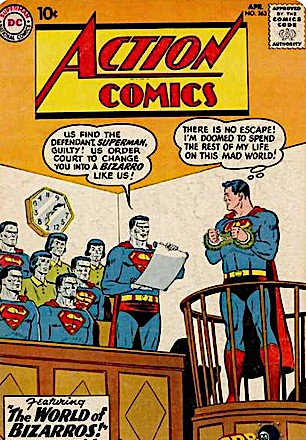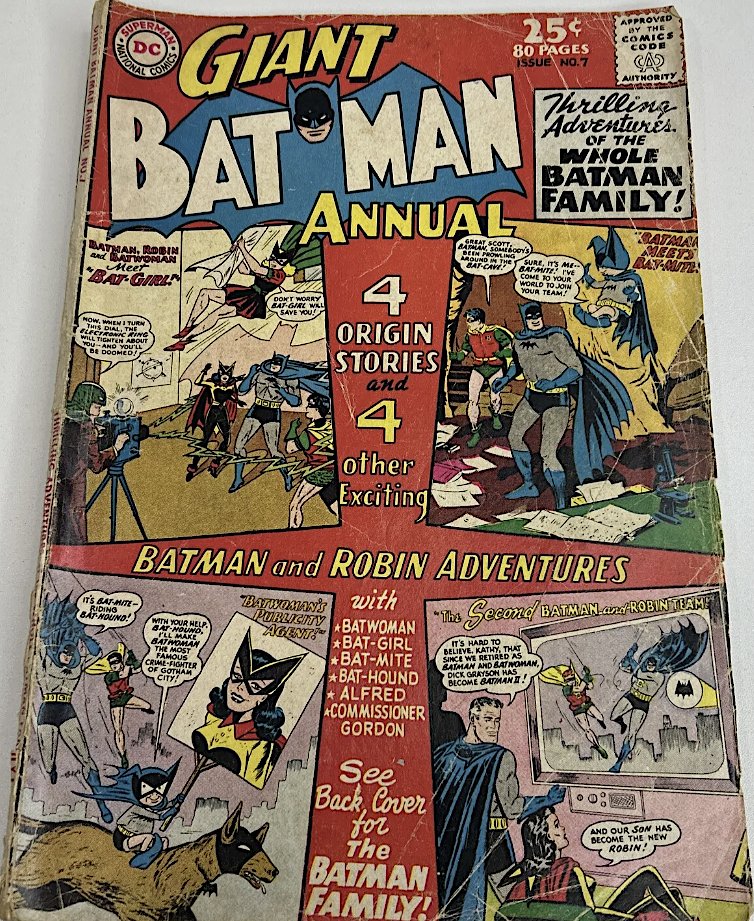I thought it would it would be fun to do a sort of quick (upsidedown) family tree of the graphics that swept me along to the present day. If you’ve been reading the Spill for awhile, you’re probably aware of some of this. While it’s my past I’m talking about, some of the “branches” very likely apply to a lot of cartoonists.
The very beginning of putting pencil to paper was the moment one of my older brothers showed me how to draw a face. At that point I was probably just learning to read and write. Realizing I could create something on paper was like stepping into another zone. A very good zone.
Loving to draw led to loving to look at drawings. The first that made a big impression on me were Chester Gould‘s Dick Tracy strips (notes on the “tree” are below the images).
Notes on the above:
 The first graphic thing — let’s call it an influence — I remember focusing on was the front page of The New York Daily News Sunday funny papers (it was a color feature wrapped around the newspaper). Dick Tracy was on that first cover; a fascination with the strip, and cartoon art, began that day. Not so much the story line, but the art [shown here is a portion of a strip from the early 1960s.The first strip I saw was likely late 1950s].
The first graphic thing — let’s call it an influence — I remember focusing on was the front page of The New York Daily News Sunday funny papers (it was a color feature wrapped around the newspaper). Dick Tracy was on that first cover; a fascination with the strip, and cartoon art, began that day. Not so much the story line, but the art [shown here is a portion of a strip from the early 1960s.The first strip I saw was likely late 1950s].
The Sunday funny pages led to comic books, especially Batman and Superman. The story lines became of interest as well as the art. I tried drawing Batman (I tried drawing him a lot) but he always came off clunky, looking nothing like the fellow in the comic books. Frustrating!
Although The Encyclopedia Brittanica seems like an odd addition to the tree, it played a huge part in my learning to draw. For some reason we had a full set in our home (the only books in the apartment as I recall). I remember returning again and again to the beautiful color plates (staring at them, more than trying to copy what I was seeing)
 MAD was a slight jump into the “real world” alongside of the superhero worlds. The wide variety of art within MAD was an eye-opener. Somehow — I really can’t explain it — Alfred E. Neuman on the cover became a stamp of approval; I believed that every issue would be worth reading. I don’t remember trying to draw any of the various MAD characters (I took just a few shots at Don Martin’s pieces). Somehow I felt that MAD art was to look at, not to touch.
MAD was a slight jump into the “real world” alongside of the superhero worlds. The wide variety of art within MAD was an eye-opener. Somehow — I really can’t explain it — Alfred E. Neuman on the cover became a stamp of approval; I believed that every issue would be worth reading. I don’t remember trying to draw any of the various MAD characters (I took just a few shots at Don Martin’s pieces). Somehow I felt that MAD art was to look at, not to touch.
MAD led to a new humor magazine my then girlfriend’s brother, Tom, was reading: National Lampoon. The Lampoon was, like MAD, another case of my absorbing the humor, not trying to copy or draw whatever art I liked within. Tom also introduced me to the work of various underground artists; Robert Crumb‘s work became a focus. For a short while I drew a comic strip in high school during lunchtime. It was called “Our Table” — all the characters were my friends sitting at our table in the cafeteria. The drawing was over-the-top heavily influenced by Crumb’s work.
When I was sixteen, Tom suggested I send my work to The New Yorker. What I sent in to then art editor James Geraghty, were not cartoons, but sketches. I took Geraghty’s rejection of that first batch as encouragement. In that same year, a friend of mine showed me a James Thurber drawing that was in The Thurber Carnival. Thurbermania began (and continues).
Thurber led me to investigate The New Yorker’s history, most especially its artists. The New Yorker Album of Drawings 1925-1975 was my New Yorker go-to bible for many years until I began collecting all the rest of the magazine’s “albums.” It’s safe to say that every single artist in this volume was an influence. This book led to a close examination of past issues of The New Yorker (courtesy of bound volumes in my alma mater’s library).
So many offshoots of influence thread all through and outside the above, it would make for a huge list to gather them all. There’s also the video component (via television), beginning with Max Fleischer’s work, and children’s book art (Babar the Elephant for one). As I wrote a while back: “cartoonists are like sponges.” Just about everything influences, but the books and magazines I focused on above were my textbooks.









I know that many of us would enjoy seeing an example of your Crumb influenced lunch comic .